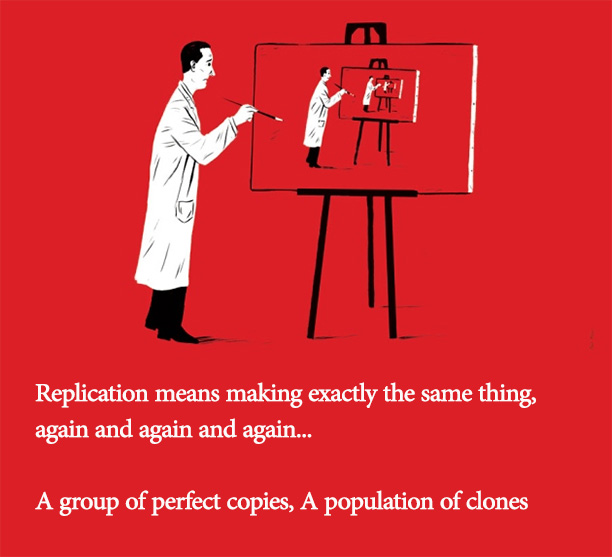We use the words replicate, reproduce, and duplicate interchangeably in daily language. However, these words have subtle differences, especially when used in the context of software, complex systems, and biology.
Firstly, let’s begin by describing the distinction between replicate and duplicate. Afterward, we will address the most perplexing aspect: the meanings of reproduction and the differences between reproduction and replication.
Replicate vs. Duplicate
“Replicate” and “duplicate” are very similar in meaning and, in most cases, can be used interchangeably. However, “duplication” carries the nuance of copying, while “replication” is closer to recreating the same thing with a separate identity.
For example, when you make a copy of your license or obtain a second one after losing the original, you then have a duplicate of it in your hand. Similarly, when you read an argument in a book and republish it on social media, you are replicating the original content.
Here are a few examples of using “duplicate” (copy) in sentences:
– How do you duplicate a key? (Make a copy of your key)
– This application takes up too much space because it duplicates all the songs on my hard disk and stores them again in its directory.
– With the ever-increasing volume of data, duplicate detection is an essential feature in dataset management systems.
However, when you read a study and attempt to recreate it precisely in the same way, you are replicating it. It’s termed as replication because it maintains a separate and independent identity despite using the same methods and procedures. You are either confirming or refuting the original study with your replication study. Therefore, in this context, the research is being replicated and not duplicated.
Reproduce vs. Replicate | Examples from the IT & Software World
You can guess the difference if you are working in the information technology and network infrastructure field. There are hardware devices called replicators, whose function is to receive a data packet and deliver it elsewhere. The receiver collects packets in such a way that there’s virtually no way to spot the difference between the primary source and the replicator. Replicators, also available as software, are used for long-range data transmission.

Now let’s talk about reproduction. Again in the same context: software and information technology. You always hear from software developers that they are trying to reproduce a bug. What do they mean by that?
They mean that the user has faced a problem while working with the software. And although they don’t know the reason behind the problem, they play with the code and the interface, hoping that the problem will happen again and they can analyze and solve it.
So when we are talking about reproducing a bug, we are not going to make exactly the same problem again. There can be minor differences, and reproduction would still help detect the bug’s source.
Reproduction, in this sense, means the process of creating a very similar but not exact copy of something.
Having the above example in mind, now you understand why we say humans and animals can reproduce themselves. We don’t use the term replicate, as the children are not precise copies of their parents.
Let me restate the difference between replication and reproduction in other words:
In replication, outputs are exactly the same as the inputs but in reproduction, outputs are just similar to the inputs.
Here you can see a few examples of the word reproduce (process of building a similar copy) in different sentences:
- The concert will be reproduced on compact disc (It’s not the concert, but it’s a concert anyway)
- Let me reproduce that scene in my mind (It wouldn’t be the same scene, but very close to reality)
- Skin cells reproduce too quickly (Make new cells very similar to themselves)
Reproduction and Replication in Biology
Just imagine if every single cell was replicating itself or if all of the species were replicating themselves. There was not any kind of evolution on the planet: No change, No improvement, No growth, No chance for the emergence of the new species, No life!
As I have emphasized in the definition of the living entities:

But is the story as simple as it seems? Unfortunately not!
In the core of every living cell, RNAs just replicate themselves:

If there was not any minor error or mutation in replication at the lower levels, there was no chance for the emergence of reproduction in the higher levels. RNAs and cells are genderless. The concept of the gender just appears in the higher and more complex levels of the hierarchy as a trick to get more distance from replication and get closer to the reproduction.
Considering reproduction vs replication we can say every living entity has to find some way to get closer to the reproduction concept.
This is one of the reasons I am so optimistic about the social networks as a trick for making the cyberspace more alive. Comparing them with the printed content and even digital contents in the websites, social networks are more prone to human and technical errors in quotation and replication, which can move the digital world one step further from the simple mechanical replication process.






